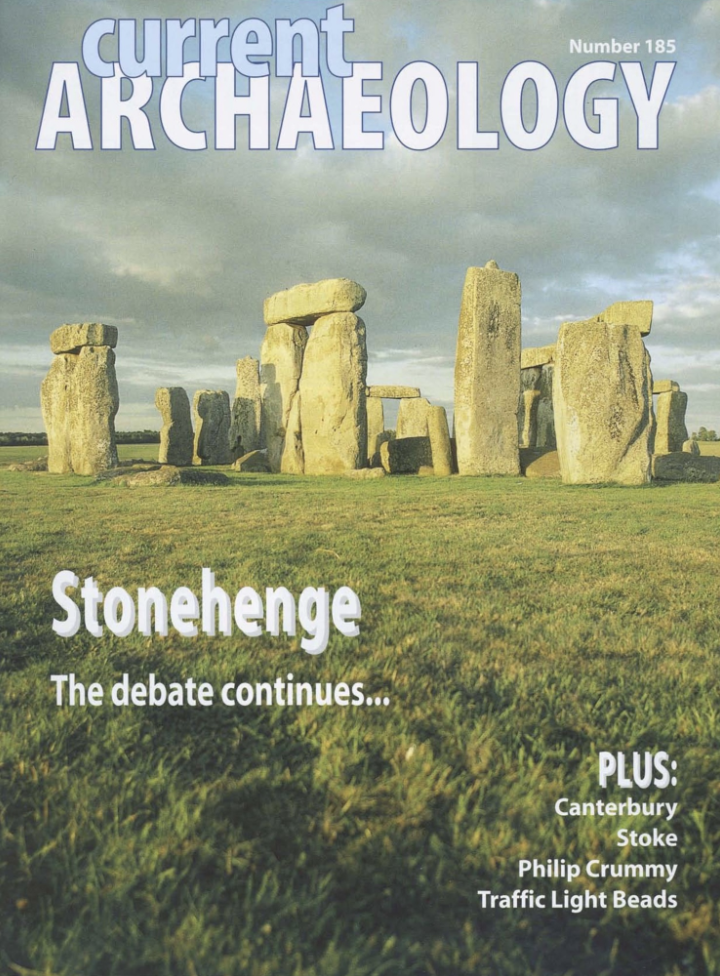It could be Britain’s biggest ever urban dig. Canterbury’s Whitefriars Project (1999-2004) is uncovering a huge 6% slice of the old city between the central zone and the ancient walls. Discoveries there are transforming ideas about life in the city in Roman, Anglo-Saxon and medieval times. In our first feature article we talk to unit director Paul Bennett and project directors Alison Hicks and Mark Houliston about Canterbury’s on-going ‘Big Dig’.
Then we visit another historic town, this time to meet veteran archaeologist Philip Crummy, leading excavator at Colchester for thirty years. We review Philip’s key discoveries: the legionary fortress, the citizen colonia reusing military buildings, and how some upper-class Britons reinvented themselves as ‘Romans’ and fitted in with the new order.
Our third feature is a very different sort of town: Stoke-on-Trent, powerhouse of the Industrial Revolution. But how did the famous ‘five towns’ potteries get started? Archaeology is now revealing the roots of Stoke’s industrial pre-eminence. New evidence – some from a 1998 dig featured on Time Team – has shown that pot-making goes back to the fifteenth century. And, with the help of local archaeologist Noel Boothroyd, we learn why so many medieval people chose to become potters.
We next have a look at some stunning Early Anglo-Saxon finds: Birte Brugmann describes ‘traffic light beads’, how they were made, and what they can tell us about England around AD 500.
Our last feature is an official reply to the articles two issues back on Stonehenge – and the subsequent letters. Mike Pitts and Julian Richards put forward the latest English Heritage plans for Stonehenge and its visitor centre. Meanwhile in the Letters pages, the rumblings still continue. We have not heard the end of this one …

